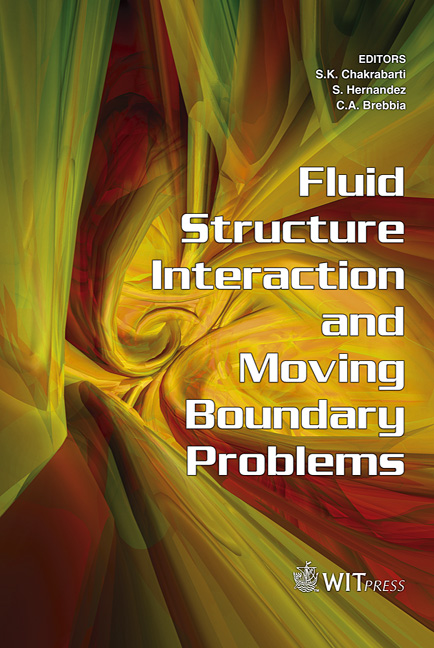The Euler-type Description Of Lagrangian Water Waves
Price
Free (open access)
Transaction
Volume
84
Pages
10
Published
2005
Size
642 kb
Paper DOI
10.2495/FSI050481
Copyright
WIT Press
Author(s)
E. V. Buldakov, P. H. Taylor & R. Eatock Taylor
Abstract
A new description of 2D continuous free-surface flows in Lagrangian coordinates is proposed. It is shown that the position of a fluid particle in such flows can be represented as a fixed point of a transformation in R2. Components of a transformation function satisfy the linear Euler-type continuity equation and can be expressed via a single function analogous to an Eulerian stream function. Fixed-point iterations lead to a simple recursive representation of a solution satisfying the Lagrangian continuity equation. Expanding the unknown function into a small-perturbation asymptotic expansion we obtain the complete asymptotic formulation of the problem in a fixed domain of Lagrangian labels. The method is then applied to a classical problem of a regular wave traveling in deep water, and the fifth order Lagrangian asymptotic solution is constructed. In contrast with early attempts of Lagrangian regular-wave expansions, the presented asymptotic solution is uniformly-valid at large times. 1 Introduction The Lagrangian description by its nature is more appropriate for representing violent free surface motion, and a perturbation technique applied to the equations in the Lagrangian form may be able to describe effects that cannot be captured by classical Eulerian expansions. For example, such phenomena as overturning waves or jet-like fluid behaviour on a rigid surface can in principle be described by low order perturbation methods if applied to equations of motion in Lagrangian form. There are just a few published examples where a perturbation technique has been applied to water wave problems in the Lagrangian formulation. The early attempt of Pierson [1] can be mentioned, where the Lagrangian displacement of fluid particles was represented as a regular expansion with respect to powers of
Keywords





